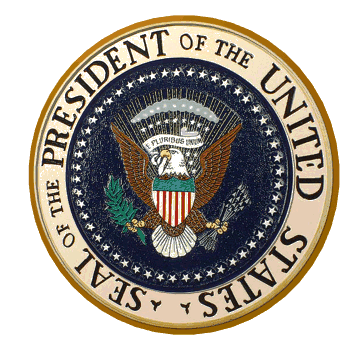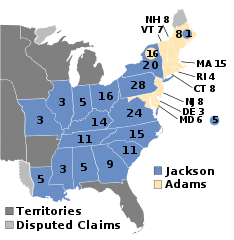 TheUSAPresidents.com
TheUSAPresidents.com 
 TheUSAPresidents.com
TheUSAPresidents.com 
 We have pages on every election!
We have pages on every election!

Cg-realms (current)AndyHogan14 (original), Public domain, via Wikimedia Commons
The 1828 election took place from Friday, October 31 - Tuesday, December 2, 1828.
NOTE: There were no nominating caucuses for either the Jacksonian or Anti-Jacksonian parties.
Following the election of 1824, Jackson and his followers accused John Quincy Adams of a "corrupt bargain", where House Speaker Henry Clay agreed to use his influence to get Adams in office in exchange for Clay becoming Secretary of State. While this wasn't proven, many believed it. After his defeat in 1824, Jackson was already renominated by the Tennessee State Legislature a few months after. Adams was also renominated by several state legislatures. Jackson's criticism peaked when Adams passed the Tariff of 1828, which opponents called the "Tariff of Abominations". The campaigns got personal as well, Jacksonians saying Adams surrendered an American girl to the Russian Zhar and Adams supporters pointing out all the men Jackson killed in duels. They also said Jackson's mother was a prostitute. All of this guaranteed the demise of the Democratic-Republican party, marking the end of the First Party System. At the end of this election, two new political parties would emerge: The Democratic Party and the Whig Party.
The electoral college stayed the same at 261 electors; 131 needed to win. 1,153,779 people voted in this election, a record turn-out for the time. This was likely due to the fact that most states now allowed poor white men to vote.
171/261 electoral votes
55.33% of the popular vote
83/261 electoral votes
43.98% of the popular vote
7/261 electoral votes
Popular vote unknown
TheUSAPresidents.com
About Us Legal Political policy Reliability
Information on this site should not be plagiarized. This site is intended for hobby purposes, not commercial. Visit here for more information.